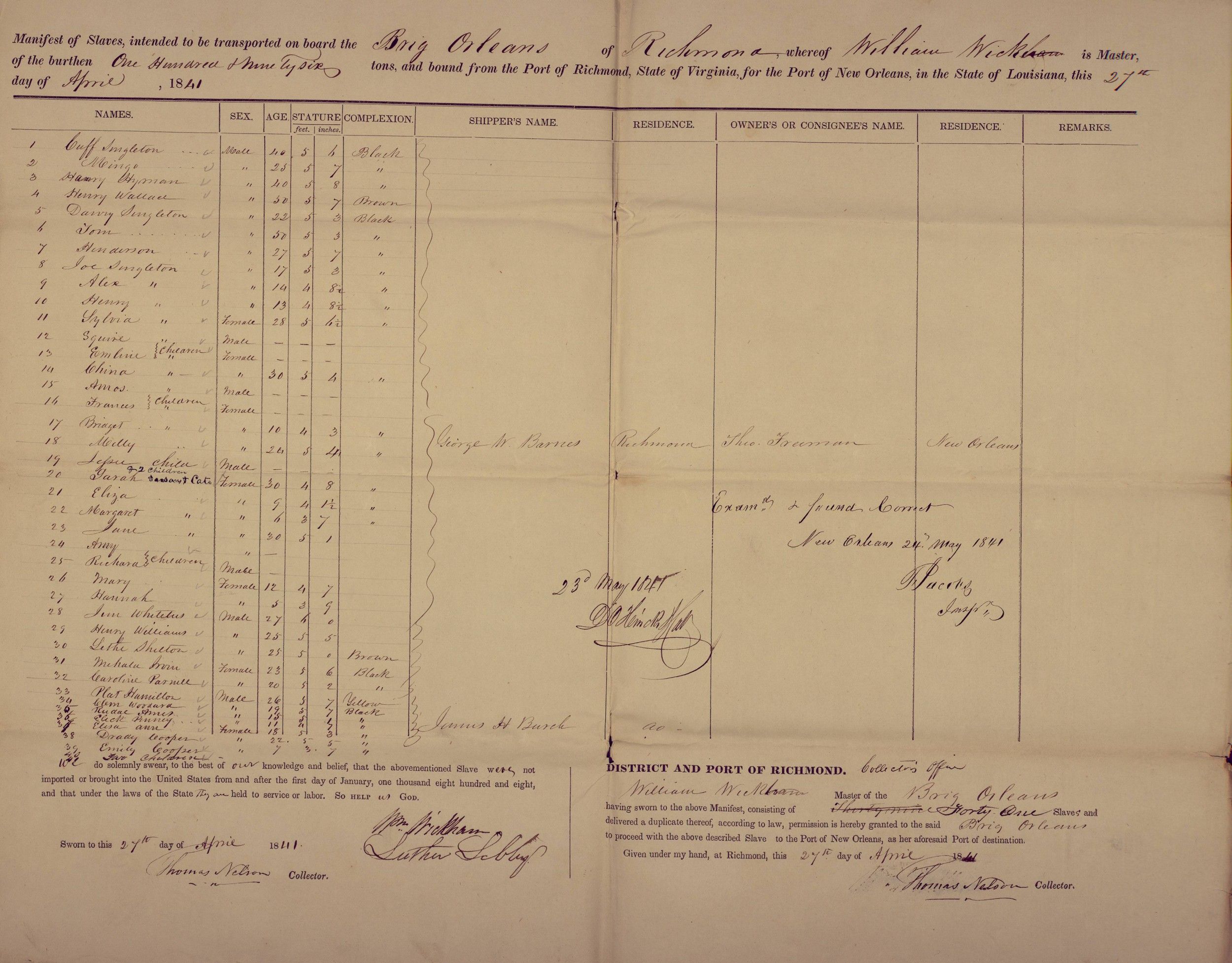Slave Manifest for the Brig Orleans
4/27/1841–5/24/1841
Add to Favorites:
Add all page(s) of this document to activity:

This manifest shows 41 enslaved people who were shipped to New Orleans, Louisiana, from Richmond, Virginia. Among them was Solomon Northup, who was listed as Plat Hamilton on line 33. A free person of color in New York, Northup had been kidnapped and sold into slavery; he was given the name Plat Hamilton aboard the ship. Years later, after he regained his freedom, he told his life story in his autobiography Twelve Years a Slave: Narrative of Solomon Northup, a Citizen of New-York, Kidnapped in Washington City in 1841 and Rescued in 1853, from a Cotton Plantation Near the Red River in Louisiana.
It had became illegal to import slaves from other countries to the United States in 1808. The domestic slave trade, however, remained legal. With the rise of cotton as a southern commodity, thousands of enslaved people were shipped from the upper south to the lower south regularly from 1808–1860. Slave manifests were required by law for each ship transporting slaves and needed to include every slave's name, sex, height, and complexion or class. In addition, slave manifests required the names of the slave owners or shippers and their residence, plus the names of the individuals the slaves were consigned to if necessary. Two copies of these manifests were required, one would be filed with the customs agent at the port of departure, and the other manifest would be filed at the port of arrival. The customs agents were required to sign these manifests.
It had became illegal to import slaves from other countries to the United States in 1808. The domestic slave trade, however, remained legal. With the rise of cotton as a southern commodity, thousands of enslaved people were shipped from the upper south to the lower south regularly from 1808–1860. Slave manifests were required by law for each ship transporting slaves and needed to include every slave's name, sex, height, and complexion or class. In addition, slave manifests required the names of the slave owners or shippers and their residence, plus the names of the individuals the slaves were consigned to if necessary. Two copies of these manifests were required, one would be filed with the customs agent at the port of departure, and the other manifest would be filed at the port of arrival. The customs agents were required to sign these manifests.
This primary source comes from the Records of the U.S. Customs Service.
National Archives Identifier: 7456569
Full Citation: Slave Manifest for the Brig Orleans; 4/27/1841–5/24/1841; May 1841; Slave Manifests, 1817 - 1861; Records of the U.S. Customs Service, Record Group 36; National Archives at Fort Worth, Fort Worth, TX. [Online Version, https://www.docsteach.org/documents/document/slave-manifest-brig-orleans, April 20, 2024]Activities that use this document
- Twelve Years a Slave
Created by the National Archives Education Team
Rights: Public Domain, Free of Known Copyright Restrictions. Learn more on our privacy and legal page.



